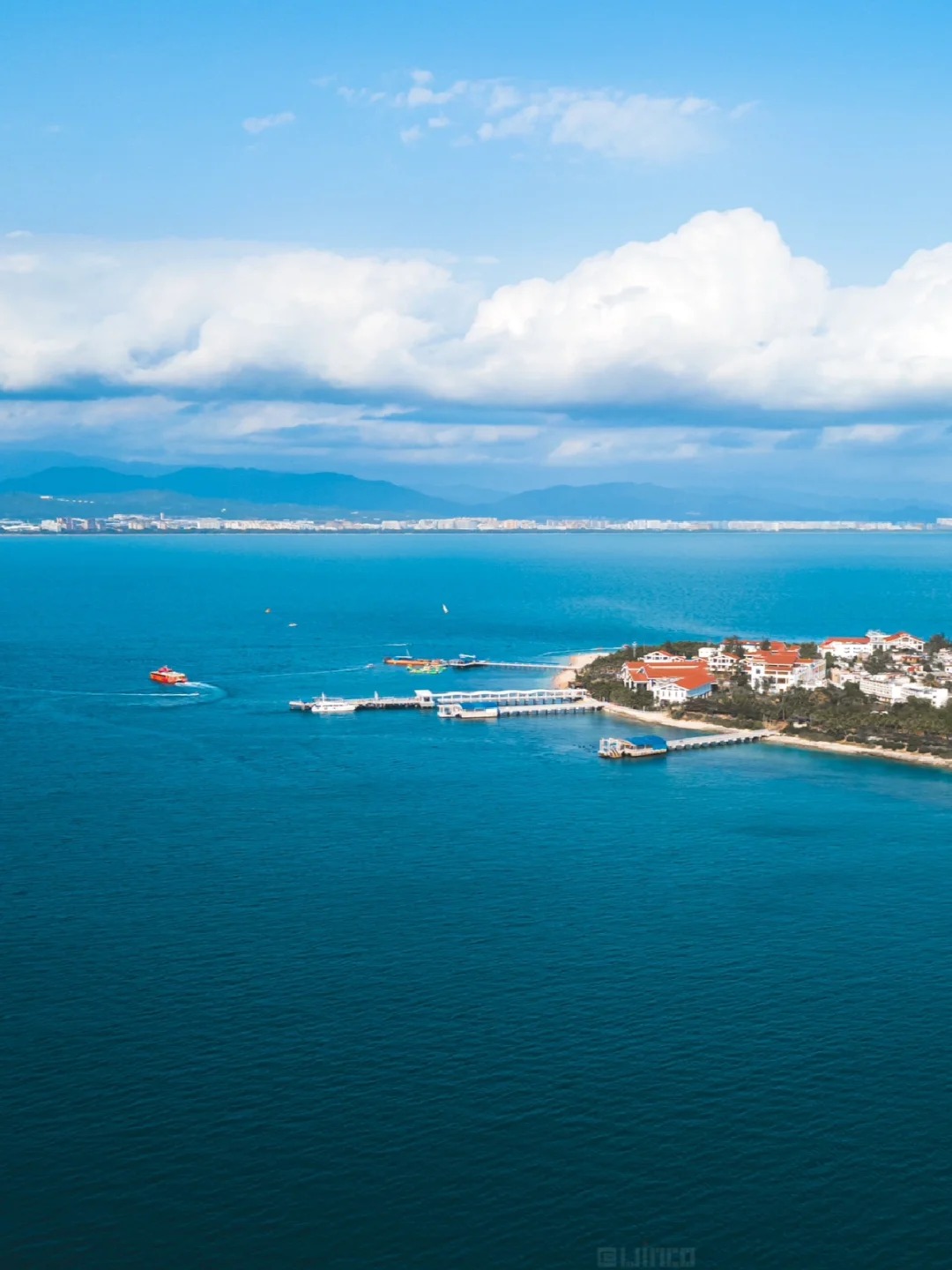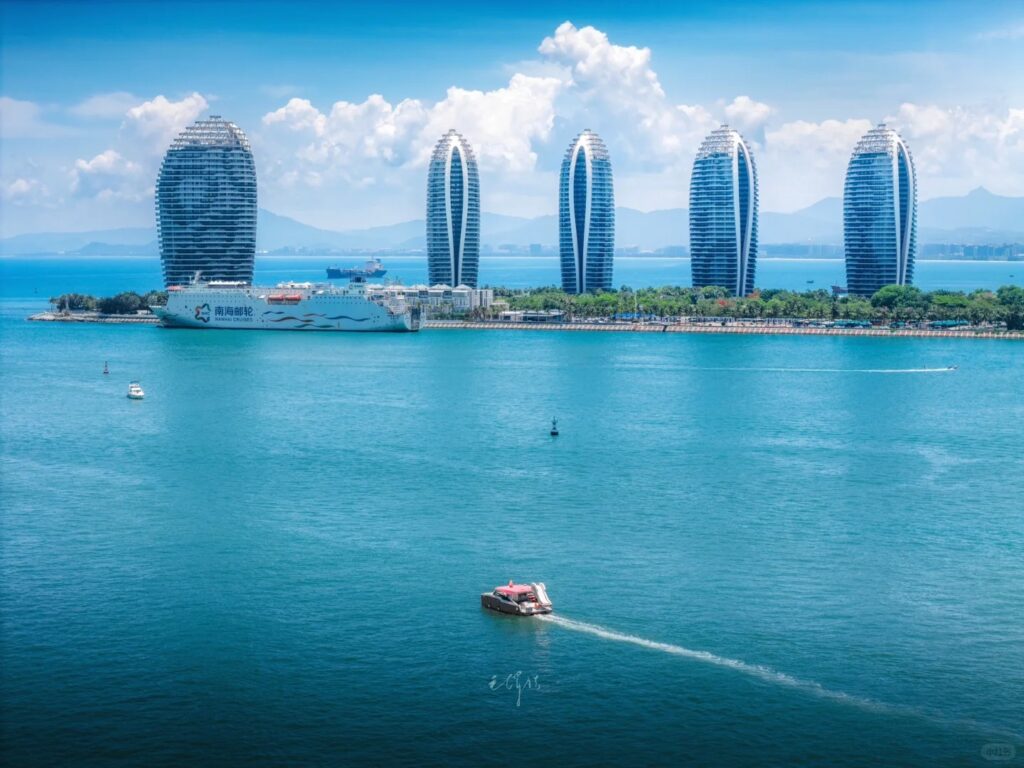Visiting Information
| Information | Details |
|---|---|
| Chinese Name | 西岛 (Xī Dǎo) |
| Location and Address | West Island, Sanya City, Hainan Province, China |
| Opening Time/Hours | 8:00 AM – 6:00 PM daily |
| Entrance Fee | Approximately 168 CNY (includes boat transfer) |
| How to Get There | By Bus: Take bus 16, 24, or 25 to Xiaoqi Port By Taxi: About 30 minutes from Sanya city center to Xiaoqi Port Then take a 10-minute boat ride to West Island |
| Best Time for Visit | October to April (dry season with pleasant weather) |
| Contact Info | Phone: +86 898 8820 2333 Email: [email protected] |
Overview
West Island, known as Xi Dao in Chinese, is a picturesque tropical island located off the coast of Sanya City in Hainan Province, China. Covering an area of approximately 2.8 square kilometers, it is the largest of Sanya’s offshore islands. West Island is renowned for its pristine beaches, crystal-clear waters, and lush vegetation, offering visitors a perfect blend of natural beauty and recreational activities. The island is a popular destination for both domestic and international tourists seeking a tropical getaway within China.
Historical Background
West Island has a rich history dating back centuries. Originally inhabited by fishing communities, the island played a significant role in the maritime history of Hainan. During the Ming and Qing dynasties, it served as an important outpost for coastal defense against pirates. In the early 20th century, the island was briefly occupied by Japanese forces during World War II. After the founding of the People’s Republic of China, West Island gradually transformed from a simple fishing village to a tourist destination. The development of tourism infrastructure began in the 1990s, and since then, the island has become an integral part of Sanya’s tourism industry, showcasing the natural beauty and cultural heritage of Hainan Province.
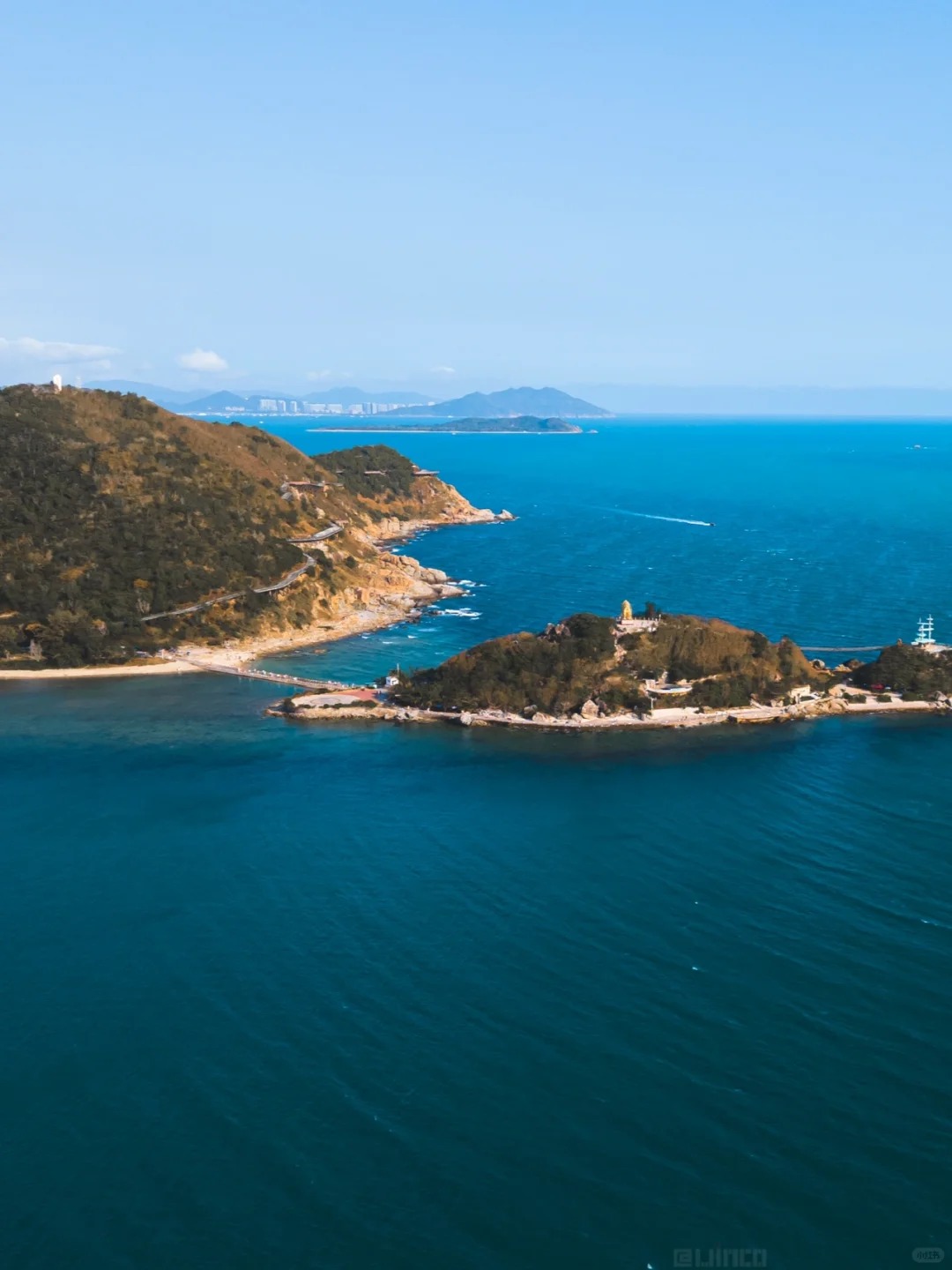
Architectural Features
- West Island Lighthouse: Standing at the highest point of the island, the West Island Lighthouse is a prominent architectural landmark. Built in the early 20th century, this white cylindrical structure serves as both a functional navigation aid and a popular viewpoint for tourists. The lighthouse offers panoramic views of the surrounding sea and neighboring islands, making it a must-visit spot for photography enthusiasts.
- Traditional Li and Miao Village: On the island, visitors can explore a recreated traditional village that showcases the architecture and lifestyle of the Li and Miao ethnic minorities, indigenous to Hainan. The village features thatched-roof houses, intricate wooden carvings, and traditional totem poles, providing insight into the island’s cultural heritage and the architectural styles of these ethnic groups.
- Beachfront Resorts: While not historical, the modern beachfront resorts on West Island represent contemporary tropical architecture. These structures are designed to blend with the natural environment, often incorporating local materials and traditional design elements. The resorts feature open-air pavilions, thatched roofs, and wooden walkways that complement the island’s tropical setting.
- Xiaoqi Port: Although not on the island itself, the Xiaoqi Port on the mainland is an important architectural component of the West Island experience. The port facility, with its modern terminal building and docking areas, serves as the gateway to the island. Its design reflects the maritime character of the region and efficiently handles the flow of visitors to and from West Island.
Cultural Importance
West Island holds significant cultural importance as a representation of Hainan’s coastal heritage and the intersection of various cultural influences. The island preserves elements of traditional Li and Miao cultures, two of the main ethnic minority groups in Hainan Province. Through cultural performances, craft demonstrations, and the recreated traditional village, visitors can gain insight into the customs, music, and art of these indigenous communities. The island also plays a role in showcasing the maritime culture of Hainan, with fishing still being an important part of local life. Additionally, West Island serves as a symbol of Sanya’s tourism development and China’s growing domestic tourism industry. It represents the balance between preserving natural beauty and cultural heritage while accommodating modern tourism needs. The island’s transformation from a fishing village to a popular tourist destination reflects the broader economic and social changes in Hainan over the past few decades.
Surrounding Attractions
- Wuzhizhou Island: Located northeast of West Island, Wuzhizhou Island is often referred to as the “Maldives of China.” Known for its heart-shaped topography, this small island boasts pristine white sand beaches and vibrant coral reefs. It’s a popular spot for diving and snorkeling, offering visitors a chance to explore the rich marine life of the South China Sea. The island also features a variety of water sports activities and scenic walking trails, making it a perfect day trip destination for those staying in Sanya or visiting West Island.
- Yalong Bay: Situated to the east of West Island, Yalong Bay is one of Sanya’s most famous beach areas. Known for its 7-kilometer crescent-shaped coastline, the bay is lined with luxury resorts and offers a wide range of water activities. Visitors can enjoy jet-skiing, parasailing, and glass-bottom boat tours. The Yalong Bay Tropical Paradise Forest Park, located nearby, provides a contrast to the beach scene with its lush rainforest and hiking trails. The bay area also includes a butterfly valley and a shell museum, offering diverse attractions for tourists.
- Nanshan Temple: Located south of West Island, Nanshan Temple is a large Buddhist complex that’s become one of Sanya’s most iconic attractions. The temple grounds feature traditional Chinese architecture, beautiful gardens, and the famous 108-meter-tall Guanyin statue of the South Sea. Visitors can explore various halls dedicated to different aspects of Buddhism, participate in religious ceremonies, and enjoy panoramic views of the coastline. The temple complex also includes a vegetarian restaurant and souvenir shops, making it a comprehensive cultural experience.
- Sanya Bay: Stretching along the western coast of Sanya, Sanya Bay is the closest major beach area to West Island. Known for its long coastline and coconut palm trees, the bay offers a more laid-back atmosphere compared to other beaches in Sanya. Visitors can enjoy leisurely walks along the beach promenade, sample local seafood at beachfront restaurants, and watch beautiful sunsets. The area is also home to the Sanya Pearl River Nantian Hot Spring Resort, where tourists can relax in natural hot spring pools after a day of sightseeing.
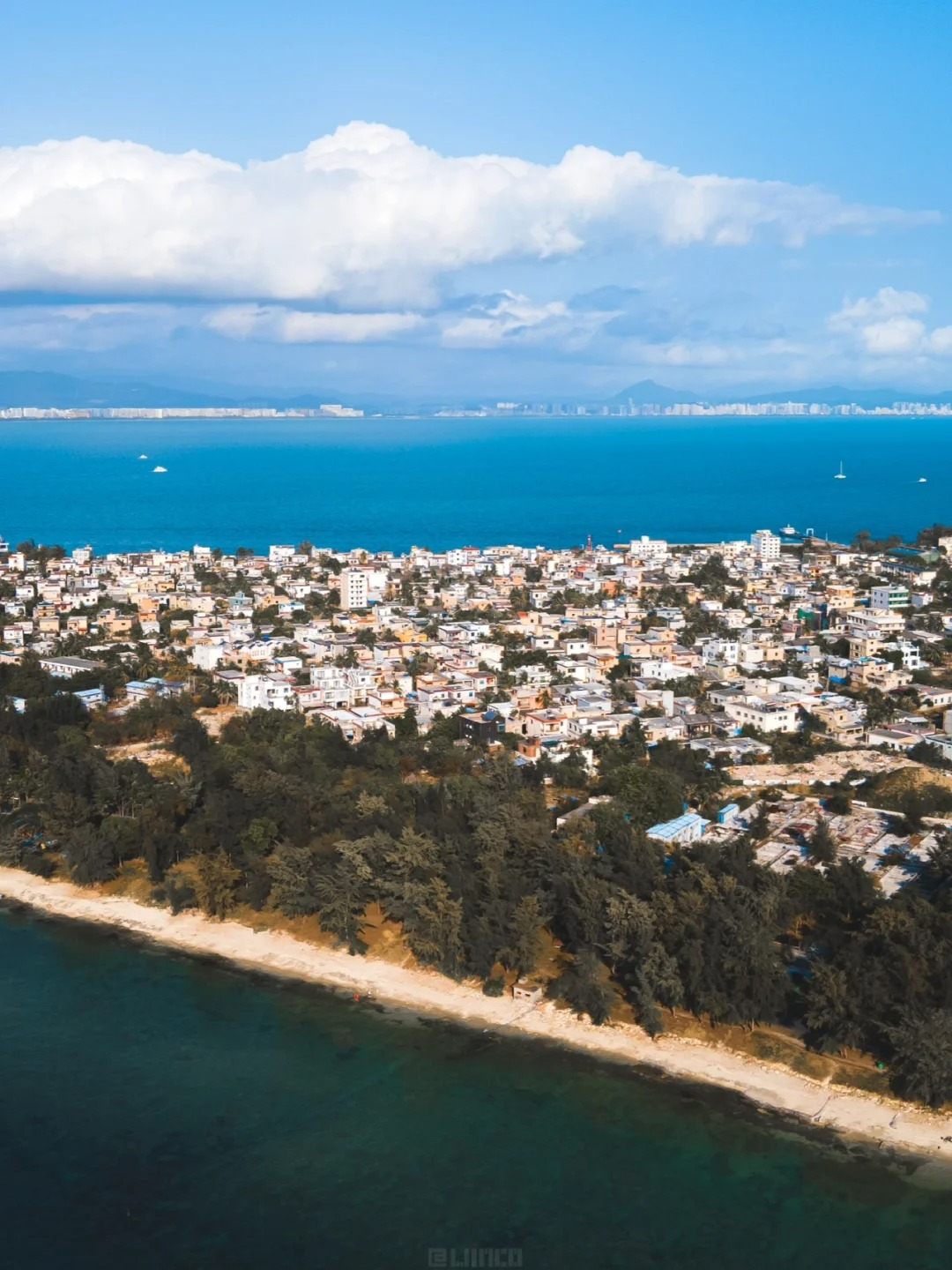
Photography Opportunities
- West Island Lighthouse Panorama: The West Island Lighthouse offers one of the best vantage points for photography on the island. From its elevated position, photographers can capture stunning panoramic views of the entire island, surrounding waters, and neighboring islands. The lighthouse itself serves as an excellent foreground subject against the backdrop of the sea and sky. Early morning or late afternoon visits provide the best lighting conditions, with the possibility of capturing dramatic sunrise or sunset shots that showcase the island’s tropical beauty.
- Beach and Coastal Landscapes: West Island’s pristine beaches and coastal areas offer numerous opportunities for landscape photography. The contrast between the white sand, turquoise waters, and lush vegetation creates visually striking compositions. Photographers can capture wide-angle shots of the curving coastline, close-ups of interesting rock formations, or long-exposure images of waves lapping at the shore. The changing light throughout the day provides different moods and colors, with golden hour being particularly favorable for warm, soft lighting on the beach scenes.
- Traditional Li and Miao Village: The recreated traditional village on West Island presents unique opportunities for cultural and architectural photography. Photographers can capture the intricate details of the thatched-roof houses, wooden carvings, and traditional costumes worn by staff members. The village setting allows for both wide shots that showcase the overall layout and close-ups that highlight specific cultural elements. During cultural performances, photographers can capture dynamic images of traditional dances and music, adding a lively dimension to the cultural documentation of the island.
- Marine Life and Water Activities: The clear waters around West Island provide excellent conditions for underwater and water-based photography. Snorkelers and divers can capture images of colorful coral reefs and tropical fish species. Above water, photographers can focus on capturing action shots of various water sports activities, such as jet-skiing or parasailing. The juxtaposition of these dynamic activities against the serene backdrop of the island can create compelling visual narratives. Additionally, the daily life of local fishermen offers opportunities for documentary-style photography that highlights the island’s traditional maritime culture.
Modern Importance
- Tourism Economic Driver: West Island plays a crucial role in Sanya’s tourism industry, which is a major economic driver for Hainan Province. The island attracts thousands of visitors annually, contributing significantly to local employment and revenue generation. Its popularity helps sustain a range of businesses, from hotels and restaurants to tour operators and souvenir shops. As part of Hainan’s broader strategy to become an international tourism destination, West Island serves as a key attraction that showcases the province’s natural beauty and cultural heritage to both domestic and international tourists.
- Environmental Conservation Model: In recent years, West Island has become increasingly important as a model for sustainable tourism and environmental conservation in China. The island’s management has implemented various measures to protect its delicate ecosystem, including coral reef restoration projects, waste management initiatives, and efforts to control visitor numbers. These conservation efforts not only help preserve the island’s natural beauty but also serve as an educational platform for visitors about the importance of environmental protection. The balance between tourism development and ecological preservation on West Island is closely watched and could influence future policies for other coastal destinations in China.
- Cultural Preservation and Education: West Island serves an important role in preserving and showcasing the cultural heritage of Hainan, particularly that of the Li and Miao ethnic minorities. The recreated traditional village and cultural performances on the island provide a platform for these indigenous cultures to be shared with a wider audience. This not only helps in preserving traditional knowledge and practices but also educates visitors about the cultural diversity of Hainan and China as a whole. The island thus acts as a living museum, contributing to cultural education and intercultural understanding in an increasingly globalized world.
- Research and Marine Conservation: The waters surrounding West Island are rich in marine biodiversity, making the area significant for marine biology research and conservation efforts. Scientific institutions and environmental organizations conduct studies on coral reef ecosystems, tropical fish species, and the impact of climate change on marine environments. The island’s role in facilitating such research contributes to broader understanding of marine ecosystems and informs conservation strategies. Additionally, public awareness programs and eco-tourism activities on the island help in educating visitors about marine conservation, potentially inspiring wider environmental consciousness among tourists.
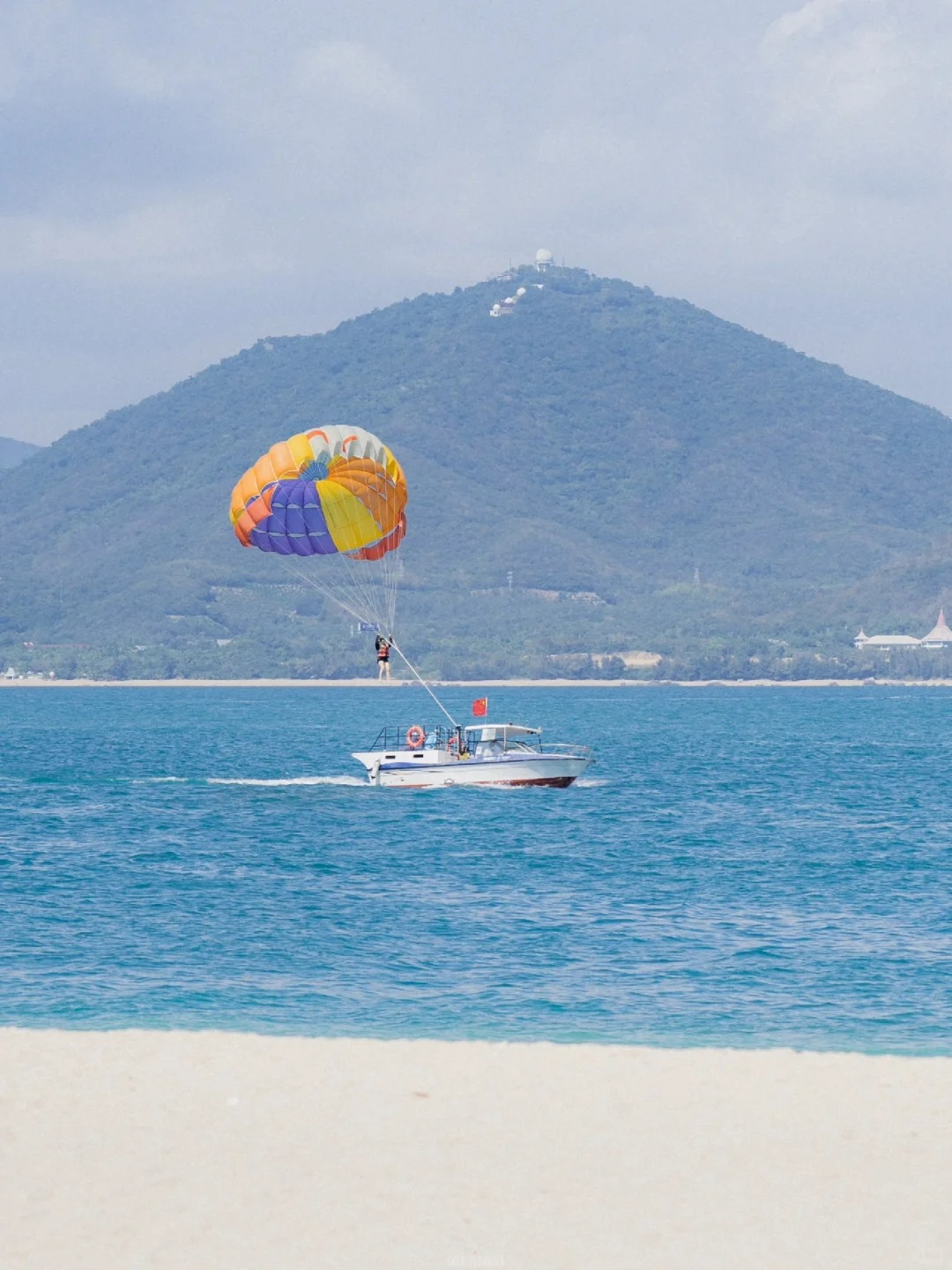
FAQ
- What is West Island famous for?
West Island is famous for its beautiful beaches, clear waters, tropical landscape, and water sports activities. It’s also known for its lighthouse, which offers panoramic views of the surrounding area, and its cultural village showcasing Li and Miao ethnic minority traditions. - What’s inside West Island?
West Island features:
1. Pristine beaches
2. A historic lighthouse
3. A recreated traditional Li and Miao village
4. Water sports facilities
5. Beachfront resorts and restaurants
6. Hiking trails
7. Snorkeling and diving spots
8. Scenic viewpoints - Is West Island free?
No, West Island is not free to visit. There is an entrance fee of approximately 168 CNY, which typically includes the boat transfer from the mainland. - Is West Island worth visiting?
Yes, West Island is worth visiting for its natural beauty, cultural experiences, and recreational activities. It offers a unique blend of tropical island atmosphere and traditional Chinese culture, making it an attractive destination for various types of travelers. - What to do in West Island?
On West Island, you can:
1. Relax on the beaches
2. Visit the lighthouse for panoramic views
3. Explore the Li and Miao cultural village
4. Participate in water sports (snorkeling, diving, jet-skiing)
5. Hike nature trails
6. Enjoy seafood at local restaurants
7. Watch cultural performances
8. Take boat tours around the island
9. Photography of scenic landscapes - How do I get to West Island in the local city?
To get to West Island from Sanya city:
1. Take bus 16, 24, or 25 to Xiaoqi Port
2. Alternatively, take a taxi (about 30 minutes from Sanya city center to Xiaoqi Port)
3. From Xiaoqi Port, take a 10-minute boat ride to West Island
Note: Boat transfers are usually included in the island entrance fee. - How to visit West Island?
To visit West Island:
1. Plan your trip to Sanya, Hainan Province
2. Arrange transportation to Xiaoqi Port
3. Purchase tickets at the port (includes boat transfer)
4. Take the boat to West Island (10-minute ride)
5. Explore the island’s attractions at your own pace or join guided tours
6. Bring sunscreen, swimwear, and comfortable walking shoes
7. Consider staying at a resort on the island for a fuller experience
8. Be mindful of the last boat back to the mainland if not staying overnight
9. Respect local customs and environmental regulations during your visit


